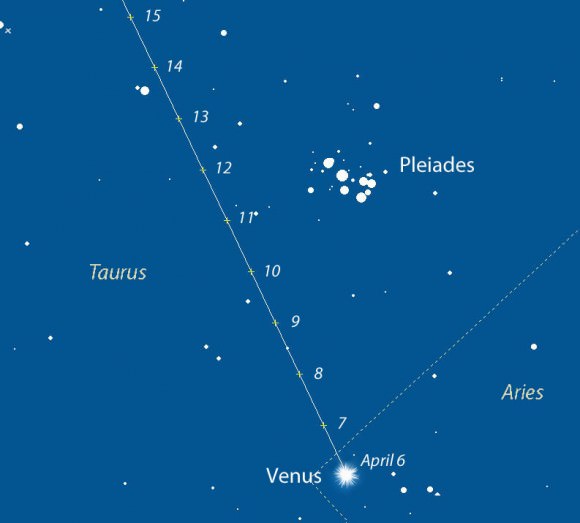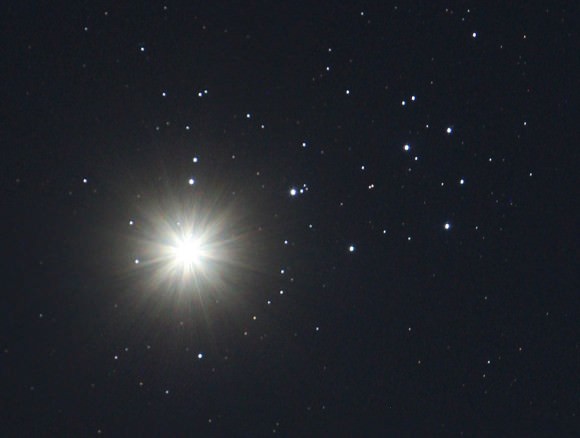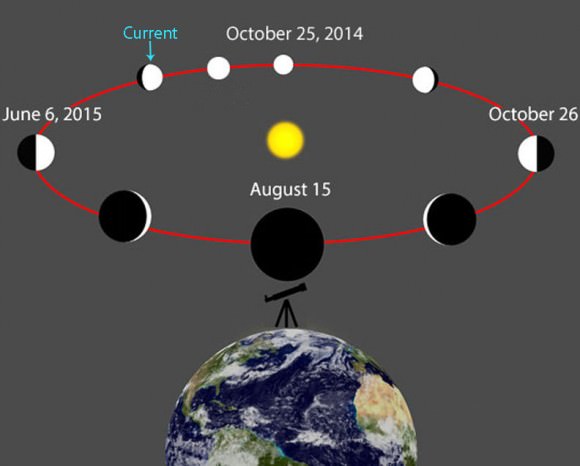If you’ve ever been impressed by the brilliance of Venus or the pulchritude of the Pleiades, you won’t want to miss what’s happening in the western sky this week. Venus has been inching closer and closer to the star cluster for months. Come Friday and Saturday the two will be only 2.5° apart. What a fantastic sight they’ll make together — the sky’s brightest planet and arguably the most beautiful star cluster side by side at dusk.
No fancy equipment is required for a great view of their close conjunction. The naked eye will do, though I recommend binoculars; a pair of 7 x 35s or 10 x 50s will increase the number of stars you’ll see more than tenfold.

Just step outside between about 8:30 and 10 p.m. local time, face west and let Venus be your guide. At magnitude -4.1, it’s rivaled in brightness only by the Moon and Sun. Early this week, Venus will lie about 5° or three fingers held together at arm’s length below the Pleiades. But each day it snuggles up a little closer until closest approach on Friday. Around that time, you’ll be able to view both in the same binocular field. Outrageously bright Venus makes for a stunning contrast against the delicate pinpoint beauty of the star cluster.

Every 8 years on mid-April evenings, Venus skirts the Pleiades just as it’s doing this week. Think back to April 2007 and you might remember a similar passage; a repeat will happen in April 2023. Venus’ cyclical visits to the Seven Sisters occur because the planet’s motion relative to the Sun repeats every 8 years as seen from Earth’s skies. No matter where and when you see Venus – morning or evening, high or low – you’ll see it in nearly the same place 8 years from that date.
But this is where it gets interesting. On closer inspection, we soon learn that not every Venus-Pleiades passage is an exact copy. There are actually 3 varieties:
* Close: Venus passes squarely in front of the cluster
* Mid-distance: Venus passes ~2.5° from the cluster
* Far: Venus passes ~3.5° from the cluster

And get this — each has its own 8-year cycle. This week’s event is part of a series of mid-distance passages that recurs every 8 years. Venus last passed directly through Pleiades in April 2012 and will again in April 2020. The next most distant meeting (3.5°) happens in April 2018 and will again in 2026.

Why three flavors? Venus’ orbit is tipped 3.4° to the plane of the ecliptic or the Sun-Earth line. During each of it 8-year close passages, it’s furthest north of the ecliptic and crosses within the Pleiades, which by good fortune lie about 4° north of the ecliptic. During the other two cycles, Venus lies closer to the ecliptic and misses the cluster by a few degrees.
Fascinating that a few simple orbital quirks allow for an ever-changing variety of paths for Venus to take around (and through!) one of our favorite star clusters.

